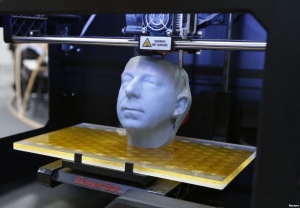3D printing
Contents
About 3D Printing
History
When did 3D printing start: Evolution from 2D:
Ethics
Looking Towards the Future
4D Printing
4D printing incorporates one more dimension: the function of time. The team dubbed "Self-Assembly Lab"[1] at Massachusetts Institute of Technology collaborated with Stratasys, a major 3D printing manufacturer, and the software corporation Autodesk Inc to develop a custom-built and adaptable technology[2].
As an extension of 3D printing, 4D printing aims to skip the step of assembling the printed material ourselves and have them self-assemble, as well as autonomously reshape over time. It utilizes multi-material 3D printing, simple energy inputs such as water, heat, and light, and geometry to produce these programmable materials.
Skylar Tibbits, a co-director and founder of Self-Assembly Labs, gave a demonstration of 4D printing at a TED Talk in 2013[3], showing how a single 1D strand could self-fold into the letters 'M I T' (with the help of a simple energy input of water).
